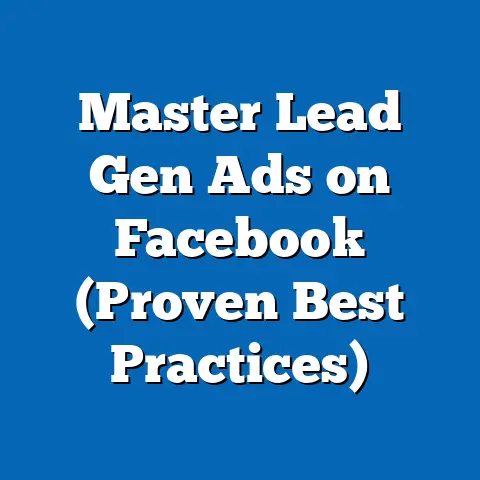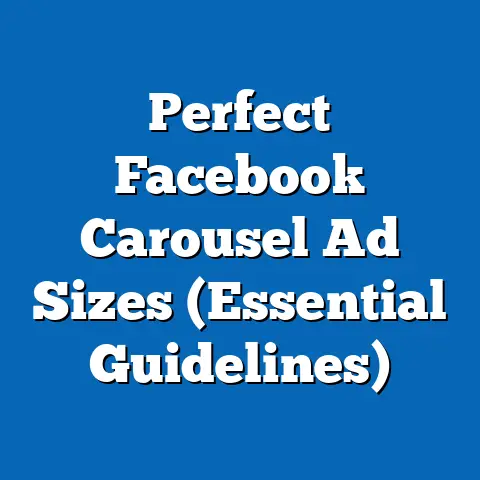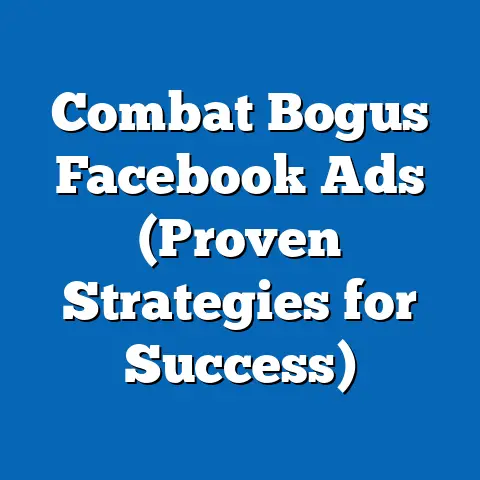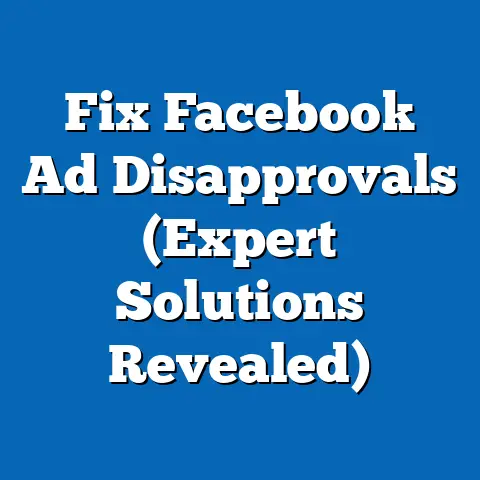Navigate Facebook Comments Wisely (Expert Engagement Tactics)
Have you ever scrolled through a brand’s Facebook page and wondered why some companies seem to effortlessly cultivate vibrant, engaging communities in their comments section, while others struggle to elicit even a simple “like”? I’ve been there, both as a consumer and as a digital marketer, and I can tell you, the difference lies in understanding and mastering the art of comment engagement.
Facebook comments are more than just fleeting thoughts left under a post; they’re a crucial element of social media engagement, a direct reflection of your brand’s perception, and a powerful tool for building lasting customer relationships. Think of it as a virtual town square where your brand interacts directly with its audience, addressing concerns, sparking conversations, and fostering a sense of belonging. Mastering this space can significantly enhance brand loyalty, customer satisfaction, and ultimately, drive business growth.
In this guide, I’ll share my expert tactics for navigating the often-turbulent waters of Facebook comments, turning potential pitfalls into opportunities for genuine connection and brand advocacy. Get ready to unlock the true power of your brand’s engagement!
Understanding the Landscape of Facebook Comments
The Facebook ecosystem thrives on interaction, and comments are a cornerstone of this interaction. They’re not just an afterthought; they actively contribute to a post’s engagement, its visibility in the newsfeed, and ultimately, how the Facebook algorithm perceives its value. Posts with high comment activity are more likely to be shown to a wider audience, creating a snowball effect of increased reach and engagement.
But the world of Facebook comments isn’t always sunshine and rainbows. It’s a diverse landscape, populated by various types of comments, each with its own implications for your brand:
- Positive Comments: These are the gold stars, the affirmations that your content is resonating with your audience. They boost morale, provide social proof, and can even spark further positive conversation.
- Questions: Opportunities to showcase your expertise and build trust by providing helpful and informative answers. Quick and accurate responses to questions can turn potential customers into loyal advocates.
- Negative Comments: The ones that can make you sweat. They can range from legitimate criticism to outright complaints. Handling these effectively is crucial for maintaining your brand’s reputation. Ignoring them can escalate the situation, while responding defensively can further damage your image.
- Spam: The bane of every social media manager’s existence. These irrelevant or promotional comments detract from the conversation and can even damage your credibility.
Why is this important?
I’ve seen firsthand how a single well-managed comment thread can significantly impact a brand’s perception. A study by Sprout Social found that 70% of consumers feel more connected to brands when their leaders are active on social media. This connection directly translates to increased loyalty and positive word-of-mouth.
Takeaway: Understanding the different types of comments and their potential impact is the first step towards crafting a winning comment engagement strategy.
The Psychology Behind Commenting
To truly excel in the realm of Facebook comments, you need to understand what motivates people to comment in the first place. It’s not just about liking or sharing; commenting requires a more active engagement, a willingness to voice an opinion or share a thought.
Here are a few key psychological factors at play:
- Social Validation: People often comment to seek validation from others. They want to know that their thoughts are shared, that they’re part of a larger group with similar interests.
- Desire for Connection: Social media is, at its core, about connection. Commenting allows users to connect with brands and other individuals, fostering a sense of community and belonging.
- Importance of Voice: People want to be heard. Commenting provides a platform for them to express their opinions, share their experiences, and contribute to the conversation.
My Experience:
I once worked with a local bakery that was struggling to build an online presence. We started focusing on asking open-ended questions in our Facebook posts, encouraging users to share their favorite pastries or their memories of visiting the bakery. The response was incredible! People were eager to share their stories, connect with other bakery lovers, and feel like they were part of something special.
Takeaway: By understanding these psychological triggers, you can tailor your engagement strategies to encourage more meaningful and impactful comments.
Strategies for Engaging with Comments
Now that we understand the “why” behind commenting, let’s dive into the “how.” Here’s a comprehensive list of expert tactics for navigating Facebook comments and turning them into opportunities for genuine engagement:
-
Timeliness: Respond quickly! In the fast-paced world of social media, speed is key. Aim to respond to comments, especially questions and concerns, within a few hours. This shows that you’re attentive, responsive, and value your audience’s time. A study by Lithium Technologies found that 53% of customers expect a response on social media within an hour.
-
Personalization: Ditch the generic responses! Use the commenter’s name, reference their specific comment, and tailor your response to their individual needs. This shows that you’re not just automating your engagement, but genuinely listening and responding to each person.
-
Empathy: Acknowledge and validate user feelings, especially when responding to negative comments. Show that you understand their frustration or disappointment. Phrases like “I understand how you feel” or “I’m sorry you had this experience” can go a long way in diffusing a tense situation.
-
Encouraging Dialogue: Don’t just provide a one-off response. Ask follow-up questions to foster deeper discussions and encourage further engagement. For example, if someone asks about a specific product feature, ask them how they plan to use it or what their biggest challenges are.
-
Utilizing Humor: When appropriate, inject humor into your responses to lighten the mood and enhance relatability. However, be cautious and avoid sarcasm or humor that could be misconstrued as insensitive or offensive. Know your audience and tailor your humor accordingly.
Timeliness: Respond quickly! In the fast-paced world of social media, speed is key. Aim to respond to comments, especially questions and concerns, within a few hours. This shows that you’re attentive, responsive, and value your audience’s time. A study by Lithium Technologies found that 53% of customers expect a response on social media within an hour.
Personalization: Ditch the generic responses! Use the commenter’s name, reference their specific comment, and tailor your response to their individual needs. This shows that you’re not just automating your engagement, but genuinely listening and responding to each person.
Empathy: Acknowledge and validate user feelings, especially when responding to negative comments. Show that you understand their frustration or disappointment. Phrases like “I understand how you feel” or “I’m sorry you had this experience” can go a long way in diffusing a tense situation.
Encouraging Dialogue: Don’t just provide a one-off response. Ask follow-up questions to foster deeper discussions and encourage further engagement. For example, if someone asks about a specific product feature, ask them how they plan to use it or what their biggest challenges are.
Utilizing Humor: When appropriate, inject humor into your responses to lighten the mood and enhance relatability. However, be cautious and avoid sarcasm or humor that could be misconstrued as insensitive or offensive. Know your audience and tailor your humor accordingly.
Example:
A user comments on a post about a new running shoe: “These look great, but are they really worth the price?”
Good Response (Personalized, Empathetic, Encouraging Dialogue): “Hey [User Name], thanks for the comment! I understand that the price point might seem high, but these shoes are packed with features designed to enhance performance and prevent injuries. What kind of running do you typically do? Knowing that will help me explain why they’re worth the investment for your specific needs.”
Bad Response (Generic, Impersonal): “They’re the best shoes on the market. You should buy them.”
Takeaway: These strategies are not just about responding to comments; they’re about building relationships and fostering a sense of community around your brand.
Handling Negative Comments
Let’s face it, negative comments are inevitable. No matter how great your product or service is, you’re bound to encounter criticism from time to time. The key is not to avoid negative comments, but to handle them effectively, turning potential disasters into opportunities for brand recovery and customer loyalty.
Here’s a framework for addressing negative comments effectively:
-
Stay Calm and Professional: Your initial reaction might be to get defensive or argue with the commenter, but resist that urge! Take a deep breath, collect your thoughts, and respond in a calm, professional manner. Remember, you’re not just responding to one person; you’re responding to your entire audience.
-
Acknowledge the Issue: Don’t ignore the negative comment or try to sweep it under the rug. Acknowledge the commenter’s concern and show that you’re taking it seriously. Use phrases like “Thank you for bringing this to our attention” or “We appreciate your feedback.”
-
Provide Solutions: If the comment is a complaint about a product or service, offer a solution. This could involve offering a refund, a replacement, or a discount on a future purchase. If the issue is more complex, offer to take the conversation offline to resolve it privately.
-
Turn Negatives into Positives: I’ve seen brands successfully transform negative interactions into opportunities for brand loyalty by going above and beyond to resolve the issue. This can involve sending a handwritten apology note, offering a personalized gift, or simply taking the time to listen and understand the customer’s perspective.
Stay Calm and Professional: Your initial reaction might be to get defensive or argue with the commenter, but resist that urge! Take a deep breath, collect your thoughts, and respond in a calm, professional manner. Remember, you’re not just responding to one person; you’re responding to your entire audience.
Acknowledge the Issue: Don’t ignore the negative comment or try to sweep it under the rug. Acknowledge the commenter’s concern and show that you’re taking it seriously. Use phrases like “Thank you for bringing this to our attention” or “We appreciate your feedback.”
Provide Solutions: If the comment is a complaint about a product or service, offer a solution. This could involve offering a refund, a replacement, or a discount on a future purchase. If the issue is more complex, offer to take the conversation offline to resolve it privately.
Turn Negatives into Positives: I’ve seen brands successfully transform negative interactions into opportunities for brand loyalty by going above and beyond to resolve the issue. This can involve sending a handwritten apology note, offering a personalized gift, or simply taking the time to listen and understand the customer’s perspective.
My Experience:
I once managed the social media for a restaurant that received a scathing review online about the slow service. Instead of getting defensive, we contacted the reviewer, apologized for the experience, and offered them a complimentary meal. They were so impressed by our response that they updated their review, praising our commitment to customer service.
Takeaway: Handling negative comments effectively is not just about damage control; it’s about building trust and demonstrating your commitment to customer satisfaction.
Creative Engagement Techniques
Beyond the basics of responding to comments, there are numerous creative techniques you can use to spark conversations, encourage engagement, and build a thriving community around your brand.
Here are a few ideas:
-
Contests and Giveaways: Leverage comments for promotional campaigns by asking users to tag friends, share their experiences, or answer a question in the comments to enter a contest or giveaway. This is a great way to increase engagement, generate buzz, and grow your audience.
-
Polls and Questions: Craft engaging questions that prompt users to share their opinions and participate in discussions. Use Facebook’s built-in poll feature to gather feedback on your products, services, or content.
-
User-Generated Content (UGC): Encourage users to share their experiences with your brand by posting photos, videos, or stories and tagging your page. This creates a sense of community, provides social proof, and generates valuable content for your brand.
Contests and Giveaways: Leverage comments for promotional campaigns by asking users to tag friends, share their experiences, or answer a question in the comments to enter a contest or giveaway. This is a great way to increase engagement, generate buzz, and grow your audience.
Polls and Questions: Craft engaging questions that prompt users to share their opinions and participate in discussions. Use Facebook’s built-in poll feature to gather feedback on your products, services, or content.
User-Generated Content (UGC): Encourage users to share their experiences with your brand by posting photos, videos, or stories and tagging your page. This creates a sense of community, provides social proof, and generates valuable content for your brand.
Example:
A clothing brand posts a photo of a customer wearing their new dress and asks their followers: “How would you style this dress? Share your ideas in the comments!”
Takeaway: Get creative! Think outside the box and find new and innovative ways to engage your audience in the comments section.
Monitoring and Analyzing Engagement
You can’t improve what you don’t measure. It’s crucial to monitor your comment engagement metrics to understand what’s working, what’s not, and how you can optimize your strategy over time.
Here are a few key metrics to track:
- Comment Volume: The total number of comments on your posts.
- Comment Sentiment: The overall tone of the comments (positive, negative, neutral).
- Engagement Rate: The percentage of people who see your post and then comment on it.
- Response Time: The average time it takes you to respond to comments.
Tools and Techniques:
- Facebook Insights: Provides basic data on comment volume and engagement rates.
- Social Media Monitoring Tools: Offer more advanced analytics, including sentiment analysis and competitive benchmarking.
Takeaway: Regularly monitor your comment engagement metrics to identify trends, measure the effectiveness of your strategies, and make data-driven decisions to improve your results.
Building a Community
Ultimately, successful comment navigation contributes to building a thriving online community around your brand. This is where the real magic happens. When you foster a positive environment where users feel safe to express their thoughts, share their experiences, and connect with each other, you create a powerful force for brand advocacy and customer loyalty.
Here are a few strategies for building a community through comment engagement:
- Establish Clear Guidelines: Set clear rules for appropriate behavior in the comments section. This helps to maintain a positive and respectful environment.
- Moderate Comments Actively: Remove spam, offensive content, and personal attacks to ensure that the conversation remains constructive.
- Recognize and Reward Active Contributors: Acknowledge and appreciate users who consistently contribute valuable comments and engage with other members of the community.
The Long-Term Benefits:
The long-term benefits of community engagement are significant:
- Increased Brand Loyalty: Customers who feel connected to your brand are more likely to remain loyal over time.
- Positive Word-of-Mouth: Engaged community members are more likely to recommend your brand to their friends and family.
- Valuable Feedback: Your community can provide valuable feedback on your products, services, and content.
Takeaway: Building a community is not a quick fix; it’s a long-term investment that requires consistent effort and genuine commitment.
Conclusion
Navigating Facebook comments is not just about responding to inquiries or resolving complaints; it’s about building relationships, fostering a sense of community, and enhancing your brand’s overall presence. By understanding the psychology behind commenting, implementing effective engagement strategies, and monitoring your results, you can unlock the true potential of your brand’s engagement and achieve remarkable results.
So, I ask you again: Are you ready to transform your approach to Facebook comments and unlock the true potential of your brand’s engagement? The town square awaits, and the conversation is just beginning. Go forth and engage!





